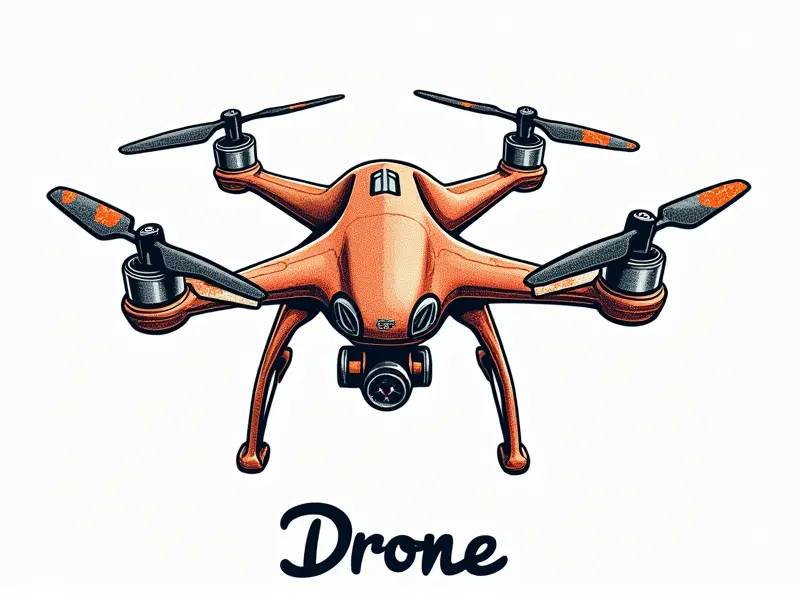FPV antenna design principles?

The Ultimate Guide to FPV Antennas: Design Principles for Optimal Performance
First-person view (FPV) technology has revolutionized the world of drone racing and aerial photography. One critical component that significantly impacts your flight experience is the FPV antenna. Properly designed and placed antennas can dramatically improve signal quality, stability, and overall range. This comprehensive guide delves into the essential design principles for creating optimal FPV antennas.
Understanding FPV Antenna Polarization Types
Polarization refers to how electromagnetic waves travel through space. In FPV systems, there are two main types: linear polarization (LP) and circular polarization (CP). Linear polarization can be further divided into horizontal (H), vertical (V), or diagonal orientations.
- Linear Polarization: LP antennas transmit signals in a single plane. H and V polarizations are commonly used for point-to-point links where the transmitter and receiver have fixed positions.
- Circular Polarization: CP antennas send out waves that rotate in either clockwise (RHCP) or counterclockwise (LHCP) directions, making them ideal for mobile applications like drones. They provide better signal stability and less interference compared to LP.
Boost Your Signal: FPV Antenna Tips
To ensure a strong and stable connection between your drone and ground station, follow these tips:
- Match Polarization: Use antennas with compatible polarization types at both ends to minimize signal loss.
- Avoid Obstructions: Keep the path of transmission free from obstacles like buildings or trees that can weaken signals.
- Use High-Quality Cables: Poor quality coaxial cables can degrade your signal. Invest in high-quality, low-loss cable options.
Optimal Placement for FPV Antennas Explained
The placement of antennas is crucial to achieving the best performance from your FPV system. Here are some considerations:
- Drone Mounting: Position the TX antenna on top of the drone and orient it towards the pilot for maximum coverage.
- Pilot Setup: Place RX antennas at a height where they can receive signals without interference from your body or equipment.
Choosing the Right FPV Antenna Type
Selecting the appropriate antenna depends on several factors, including range requirements and environmental conditions. Common choices include:
- Dipole Antennas: Simple and effective for short-range applications.
- Patch Antennas: Compact design suitable for high-frequency signals in confined spaces.
Common Mistakes in FPV Antenna Setup
Avoid these pitfalls to ensure optimal performance:
- Inconsistent Polarization: Mixing LP and CP antennas can lead to signal degradation.
- Improper Mounting: Incorrect positioning of TX/RX antennas can result in poor reception.
Enhance Flight Performance with Antennas
A well-designed FPV antenna system contributes significantly to flight performance by providing reliable and stable video transmission. This ensures smoother control and better visibility during flights, enhancing the overall experience for pilots.
DIY FPV Antenna Designs for Beginners
If you're new to building your own antennas, start with simple designs:
- PiPole Antennas: Easy-to-build and cost-effective option for beginners.
- Ribbon Antennas: Suitable for long-range applications but require careful construction.
The Ultimate Guide to FPV Antennas
This guide covers all aspects of designing, selecting, and optimizing your FPV antennas. From understanding polarization types to choosing the right antenna type and avoiding common mistakes, you'll be equipped with everything needed for top-notch performance.
Maximize Range with Smart Antenna Choices
To achieve maximum range in your FPV setup, consider:
- High-Gain Antennas: Use antennas with higher gain capabilities to extend the transmission distance.
- Diversity Reception: Implement dual-receiver systems for improved signal reliability over long distances.
Essential FPV Antenna Design Basics
The foundation of any successful FPV antenna design includes understanding basic principles such as impedance matching, bandwidth requirements, and radiation patterns. These elements ensure that your antennas perform optimally under various conditions.
Key Factors in FPV Antenna Selection
Making the right choice involves considering:
- Frequency Band: Select an antenna compatible with your transmitter's frequency band.
- Environment: Choose antennas that suit outdoor or indoor environments based on their performance characteristics.
Conclusion
Mastery of FPV antenna design principles is crucial for achieving superior flight experiences in drone racing and aerial photography. By understanding polarization types, optimizing placement, selecting the right antenna type, and avoiding common mistakes, you can significantly enhance signal quality and range. Whether you're a beginner or an experienced pilot, this guide provides valuable insights to elevate your FPV setup.

